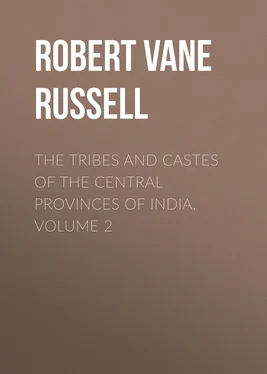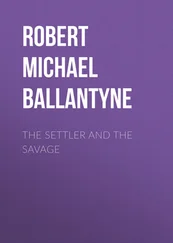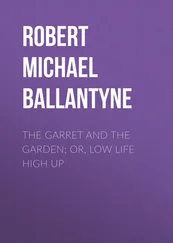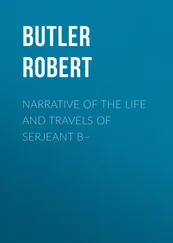Robert Vane Russell - The Tribes and Castes of the Central Provinces of India, Volume 2
Здесь есть возможность читать онлайн «Robert Vane Russell - The Tribes and Castes of the Central Provinces of India, Volume 2» — ознакомительный отрывок электронной книги совершенно бесплатно, а после прочтения отрывка купить полную версию. В некоторых случаях можно слушать аудио, скачать через торрент в формате fb2 и присутствует краткое содержание. Жанр: foreign_prose, История, foreign_edu, foreign_antique, на английском языке. Описание произведения, (предисловие) а так же отзывы посетителей доступны на портале библиотеки ЛибКат.
- Название:The Tribes and Castes of the Central Provinces of India, Volume 2
- Автор:
- Жанр:
- Год:неизвестен
- ISBN:нет данных
- Рейтинг книги:4 / 5. Голосов: 1
-
Избранное:Добавить в избранное
- Отзывы:
-
Ваша оценка:
- 80
- 1
- 2
- 3
- 4
- 5
The Tribes and Castes of the Central Provinces of India, Volume 2: краткое содержание, описание и аннотация
Предлагаем к чтению аннотацию, описание, краткое содержание или предисловие (зависит от того, что написал сам автор книги «The Tribes and Castes of the Central Provinces of India, Volume 2»). Если вы не нашли необходимую информацию о книге — напишите в комментариях, мы постараемся отыскать её.
The Tribes and Castes of the Central Provinces of India, Volume 2 — читать онлайн ознакомительный отрывок
Ниже представлен текст книги, разбитый по страницам. Система сохранения места последней прочитанной страницы, позволяет с удобством читать онлайн бесплатно книгу «The Tribes and Castes of the Central Provinces of India, Volume 2», без необходимости каждый раз заново искать на чём Вы остановились. Поставьте закладку, и сможете в любой момент перейти на страницу, на которой закончили чтение.
Интервал:
Закладка:
3. Birth and death ceremonies.
When a woman becomes pregnant for the first time, her mother goes to her taking a new cloth and cakes and a preparation of milk, which is looked on as a luxurious food, and which, it is supposed, will strengthen the child in the womb. After birth the mother is impure for five days. The dead are usually burnt, but children under six whose ears have not been pierced, and persons dying a violent death or from cholera or smallpox are buried. When the principal man of the family dies, the caste-fellows at the mourning feast tie a cloth round the head of his successor to show that they acknowledge his new position. They offer water to the dead in the month of Kunwār (September-October).
4. Religion and social customs.
They have a vague belief in a supreme God but do not pay much attention to him. Their family god is Dulha Deo, to whom they offer goats, fowls, cocoanuts and cakes. In the forest tracts they also worship Bura Deo, the chief god of the Gonds. The deity who presides over their profession is Lohā-Sur, the Iron demon, who is supposed to live in the smelting-kilns, and to whom they offer a black hen. Formerly, it is said, they were accustomed to offer a black cow. They worship their smelting implements on the day of Dasahra and during Phāgun, and offer fowls to them. They have little faith in medicine, and in cases of sickness requisition the aid of the village sorcerer, who ascertains what deity is displeased with them by moving grain to and fro in a winnowing-fan and naming the village gods in turn. He goes on repeating the names until his hand slackens or stops at some name, and the offended god is thus indicated. He is then summoned and enters into the body of one of the persons present, and explains his reason for being offended with the sick person, as that he has passed by the god’s shrine without taking off his shoes, or omitted to make the triennial offering of a fowl or the like. Atonement is then promised and the offering made, while the sick person on recovery notes the deity in question as one of a vindictive temper, whose worship must on no account be neglected. The Agarias say that they do not admit outsiders into the caste, but Gonds, Kawars and Ahīrs are occasionally allowed to enter it. They refuse to eat monkeys, jackals, crocodiles, lizards, beef and the leavings of others. They eat pork and fowls and drink liquor copiously. They take food from the higher castes and from Gonds and Baigas. Only Bahelias and other impure castes will take food from them. Temporary excommunication from caste is imposed for conviction of a criminal offence, getting maggots in a wound, and killing a cow, a dog or a cat. Permanent excommunication is imposed for adultery or eating with a very low caste. Readmission to caste after temporary exclusion entails a feast, but if the offender is very poor he simply gives a little liquor or even water. The Agarias are usually sunk in poverty, and their personal belongings are of the scantiest description, consisting of a waist-cloth, and perhaps another wisp of cloth for the head, a brass lota or cup and a few earthen vessels. Their women dress like Gond women, and have a few pewter ornaments. They are profusely tattooed with representations of flowers, scorpions and other objects. This is done merely for ornament.
5. Occupation.
The caste still follow their traditional occupation of iron-smelting and also make a few agricultural implements. They get their ore from the Maikal range, selecting stones of a dark reddish colour. They mix 16 lbs. of ore with 15 lbs. of charcoal in the furnace, the blast being produced by a pair of bellows worked by the feet and conveyed to the furnace through bamboo tubes; it is kept up steadily for four hours. The clay coating of the kiln is then broken down and the ball of molten slag and charcoal is taken out and hammered, and about 3 lbs. of good iron are obtained. With this they make ploughshares, mattocks, axes and sickles. They also move about from village to village with an anvil, a hammer and tongs, and building a small furnace under a tree, make and repair iron implements for the villagers.
Agharia
1. Origin.
Agharia 4 4 This article is mainly compiled from papers by the late Mr. Baikunth Nāth Pujāri, Extra Assistant Commissioner, Sambalpur; Sitāram, Head Master of the Raigarh English School, and Kanhyā Lāl, clerk in the Gazetteer office.
(a corruption of Agaria, meaning one who came from Agra).—A cultivating caste belonging to the Sambalpur District 5 5 Now transferred to Bengal.
and adjoining States. They number 27,000 persons in the Raigarh and Sārangarh States and Bilāspur District of the Central Provinces, and are found also in some of the Chota Nāgpur States transferred from Bengal. According to the traditions of the Agharias their forefathers were Rājpūts who lived near Agra. They were accustomed to salute the king of Delhi with one hand only and without bending the head. The king after suffering this for a long time determined to punish them for their contumacy, and summoned all the Agharias to appear before him. At the door through which they were to pass to his presence he fixed a sword at the height of a man’s neck. The haughty Agharias came to the door, holding their heads high and not seeing the sword, and as a natural consequence they were all decapitated as they passed through. But there was one Agharia who had heard about the fixing of the sword and who thought it better to stay at home, saying that he had some ceremony to perform. When the king heard that there was one Agharia who had not passed through the door, he sent again, commanding him to come. The Agharia did not wish to go but felt it impossible to decline. He therefore sent for a Chamār of his village and besought him to go instead, saying that he would become a Rājpūt in his death and that he would ever be held in remembrance by the Agharia’s descendants. The Chamār consented to sacrifice himself for his master, and going before the king was beheaded at the door. But the Agharia fled south, taking his whole village with him, and came to Chhattīsgarh, where each of the families in the village founded a clan of the Agharia caste. And in memory of this, whenever an Agharia makes a libation to his ancestors, he first pours a little water on the ground in honour of the dead Chamār. According to another version of the story three brothers of different families escaped and first went to Orissa, where they asked the Gajpati king to employ them as soldiers. The king caused two sheaths of swords to be placed before them, and telling them that one contained a sword and the other a bullock-goad, asked them to select one and by their choice to determine whether they would be soldiers or husbandmen. From one sheath a haft of gold projected and from the other one of silver. The Agharias pulled out the golden haft and found that they had chosen the goad. The point of the golden and silver handles is obvious, and the story is of some interest for the distant resemblance which it bears to the choice of the caskets in The Merchant of Venice . Condemned, as they considered, to drive the plough, the Agharias took off their sacred threads, which they could no longer wear, and gave them to the youngest member of the caste, saying that he should keep them and be their Bhāt, and they would support him with contributions of a tenth of the produce of their fields. He assented, and his descendants are the genealogists of the Agharias and are termed Dashānshi. The Agharias claim to be Somvansi Rājpūts, a claim which Colonel Dalton says their appearance favours. “Tall, well-made, with high Aryan features and tawny complexions, they look like Rājpūts, though they are more industrious and intelligent than the generality of the fighting tribe.” 6 6 Dalton’s Ethnology of Bengal , p. 322.
Интервал:
Закладка:
Похожие книги на «The Tribes and Castes of the Central Provinces of India, Volume 2»
Представляем Вашему вниманию похожие книги на «The Tribes and Castes of the Central Provinces of India, Volume 2» списком для выбора. Мы отобрали схожую по названию и смыслу литературу в надежде предоставить читателям больше вариантов отыскать новые, интересные, ещё непрочитанные произведения.
Обсуждение, отзывы о книге «The Tribes and Castes of the Central Provinces of India, Volume 2» и просто собственные мнения читателей. Оставьте ваши комментарии, напишите, что Вы думаете о произведении, его смысле или главных героях. Укажите что конкретно понравилось, а что нет, и почему Вы так считаете.












